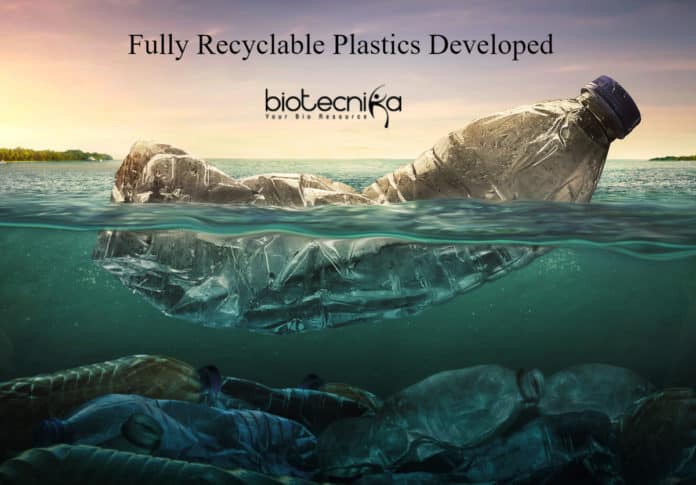Fully Recyclable Plastics Developed
Scientists at the Basque Country and Colorado State University have developed a new class of bio-renewable, biodegradable plastics. The researchers claim that their plastics are an improvement on existing ones and would promote the circular economy.
Plastics have become an important part of our everyday lives. But their growing production and use are threatening to pollute the entire planet, in particular, the oceans. It is the final destination for tonnes and tonnes of plastic, a material that may take thousands of years to disappear.

A group of researchers- Haritz Sardón, Ainara Sangroniz, and Agustin Etxeberria at the UPV/EHU’s Faculty of Chemistry, in collaboration with Eugene Y.-X. Chen, Jian-Bo Zhu, and Xiaoyan Tang at Colorado State University in the United States have designed fully recyclable packaging materials.
Fully Recyclable Plastics Developed- The New Material
According to scientists, the new material promotes the circular economy for plastic packaging materials where design and production fully comply with requirements about reuse, repair, and recycling. The research has been published recently in Nature Communications. It is seen as a step forward in solving the problem of plastic.
The lack
of suitable recycling systems plus their non-degradable nature has led to the build-up of plastic in the environment.To solve this problem, biodegradable materials have attracted considerable interest. In the right conditions, these polymers degrade to form carbon dioxide, water, biomass, etc. According to one of the scientist Haritz Sardón, lactic acid is one of the most promising biodegradable polymers. Yet its high rigidity plus its low barrier character would mean that this material made out of lactic acid is inadequate for replacing marketing materials, he explained.
The phenomenon has accounted for the recent growth in the importance of chemical recycling. Once materials of this type reached the end of their useful service life, the UPV/EHU researcher said that they could be recycled chemically, and the original monomer or new monomers could be obtained.
This work explores two chemically recyclable homopolymers: gamma-butyrolactone, which displays suitable mechanical properties, but high permeability to various gases and vapors.
In contrast, trans-hexahydrophthalide displays the opposite properties: it is very rigid and has low permeability. So the researchers opted to develop copolymers by combining both compounds/monomers hence the result- Fully Recyclable Plastics Developed. By varying their composition, in particular, it was possible to synthesize materials with suitable mechanical properties that are better than biodegradable polymers and similar to commercial plastic materials which are currently used in packaging.



























